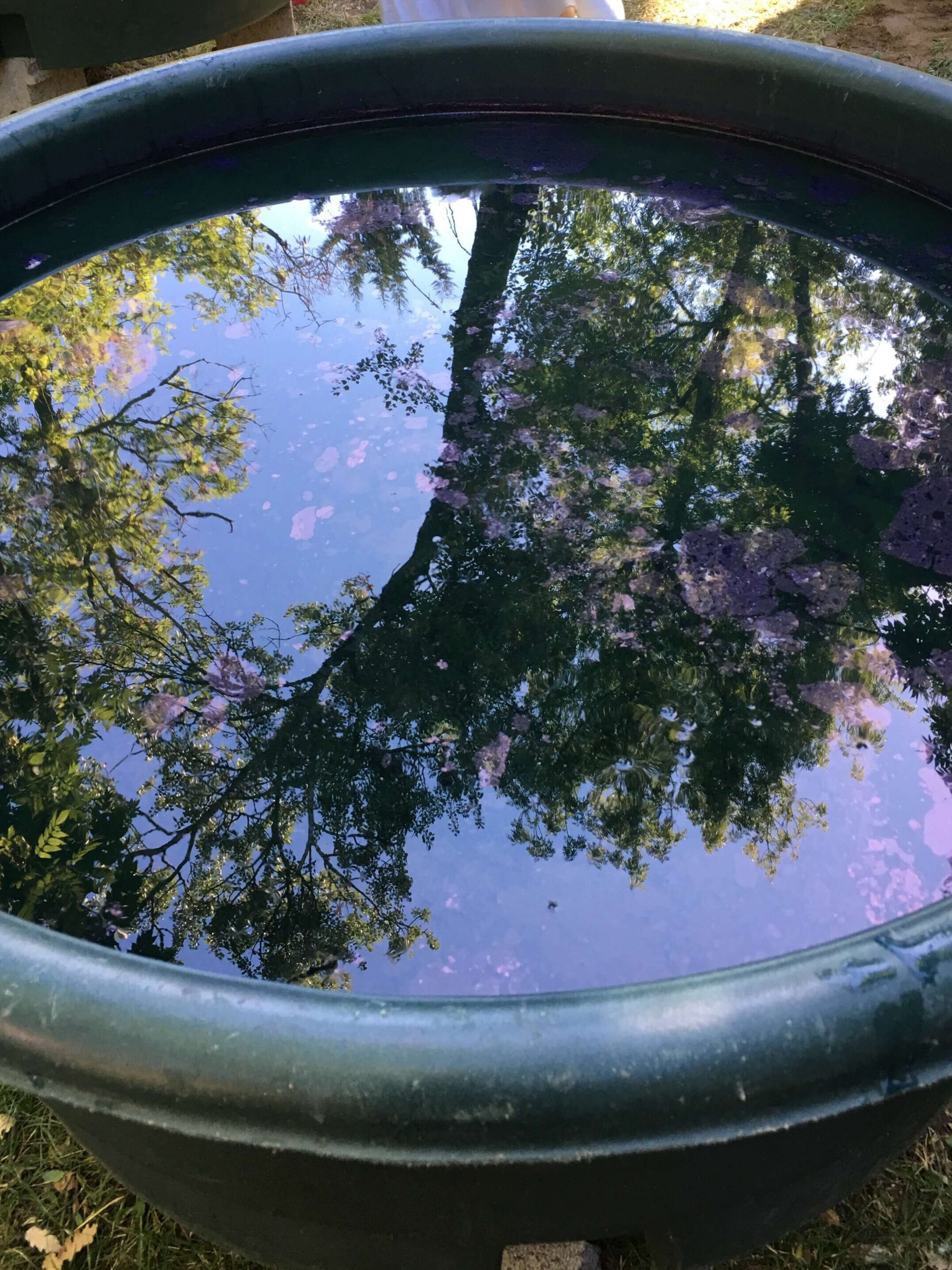
Woad Natural Dye Workshop
The French are known for their signature blue, but how did this come about? The color has a long and fascinating history, with evidence of use dating as far back as the Stone Age, all due to one miraculous native plant: Isatis tinctoria, commonly referred to as woad. While we tend to be more familiar with the Indigofera tinctoria species, or indigo plant of Asia, due to the cheap and readily available synthetic version that is ubiquitous in our modern jeans, very few people are familiar with the European version of blue.
Indigo vs. Woad
As pictured above on the top, indigo powder and the resulting dye has a very deep, inky purple blue hue, with a pinky purple color found in the flower, whereas the woad below has a more vibrant hue that is laced with the yellow greens which are clearly present in the flowers of the plant.
Extracting the dyes from both plants is a labor intensive process requiring multiple steps of fermentation, both to process the leaves into powder and in the dying vats that harness the substance, and the removal and reintroduction of oxygen which is necessary to create these wondrous shades of blue. You can see the chemical reaction in front of your eyes: after the fabric is dipped in the vat and brought into the air, the introduction of oxygen transforms the color from a yellow green shade to blue, like magic. It is amazing to consider that ancient people were the first to figure out the complex set of steps required to make this happen.
On to the dye vats.
During our Selvedge Magazine textile retreat at Chateau Dumas, we were treated to a full day of woad dying, led by master woad cultivator and dyer Denise Lambert of L'Atelier des Bleus Pastel d'Occitanie. She demonstrated how the textile comes out of the vat a distinct green color and then quickly morphs into a light blue as it hits the air, with multiple dips strengthening the hue.
After the exciting demonstration, it was fair game and we all got to experience the truly organic nature of these dye vats, careful to lower our textiles slowly and without air bubbles so as not to introduce too much oxygen and “exhaust the vat”. It takes a lot of skill and patience to master this technique, but we all ended up with some lovely pieces to take home and a truly magical experience underneath the trees on the grounds of Chateau Dumas.








